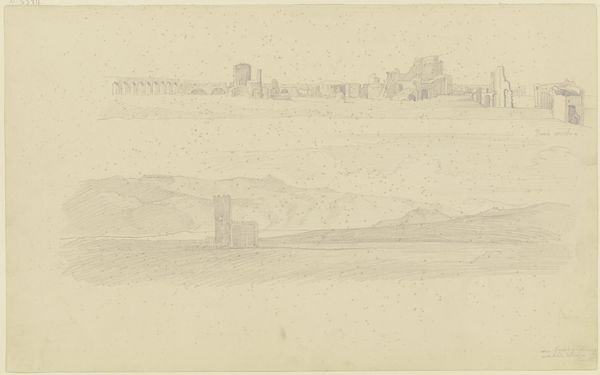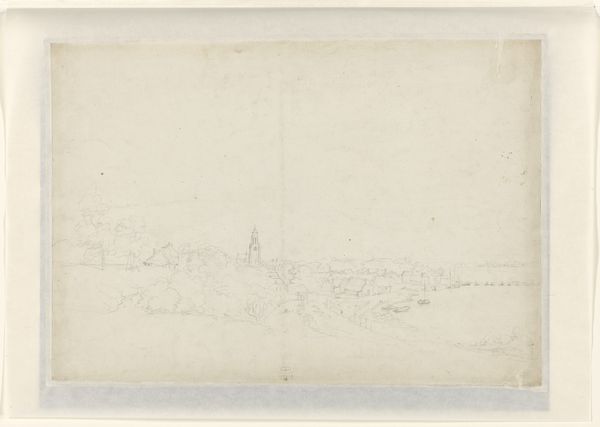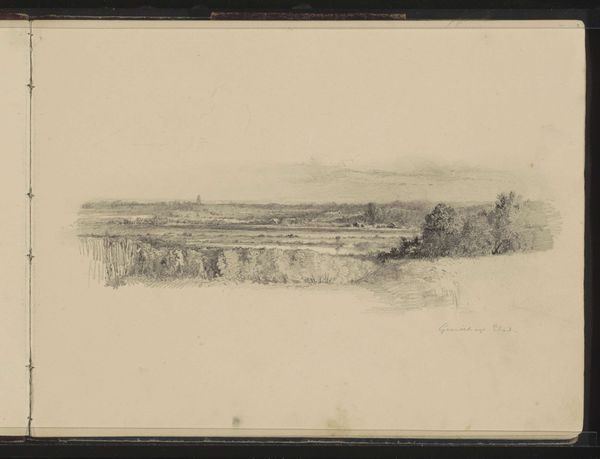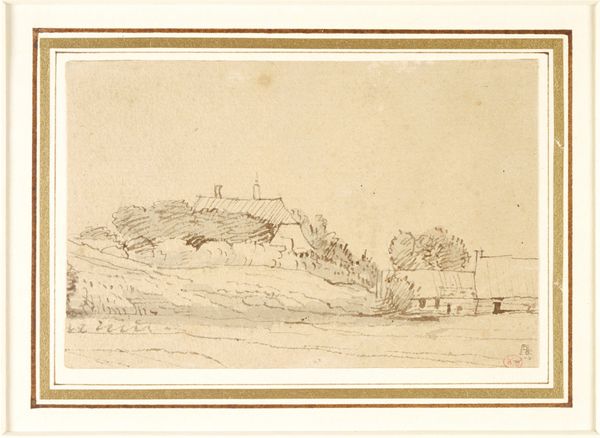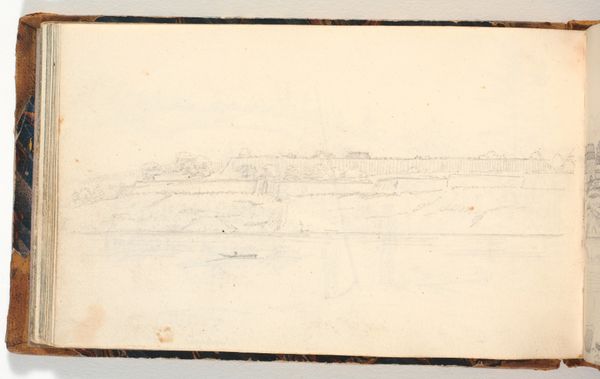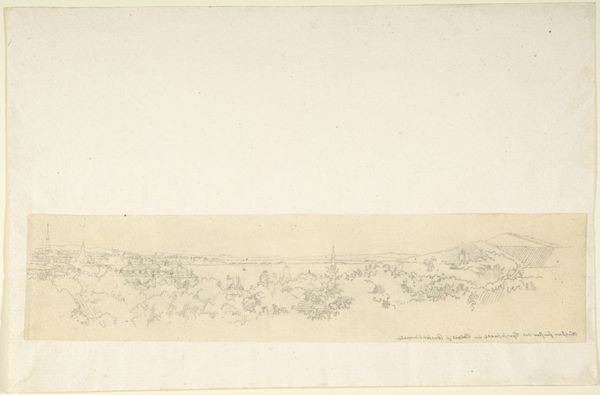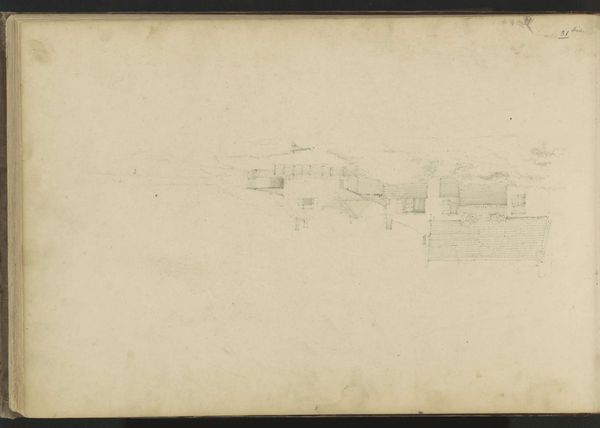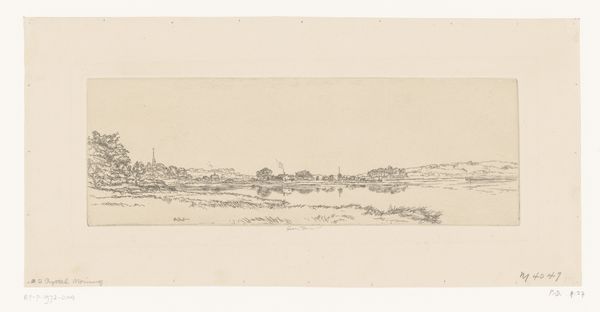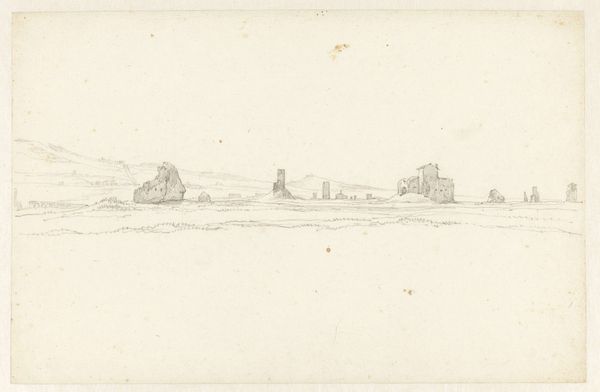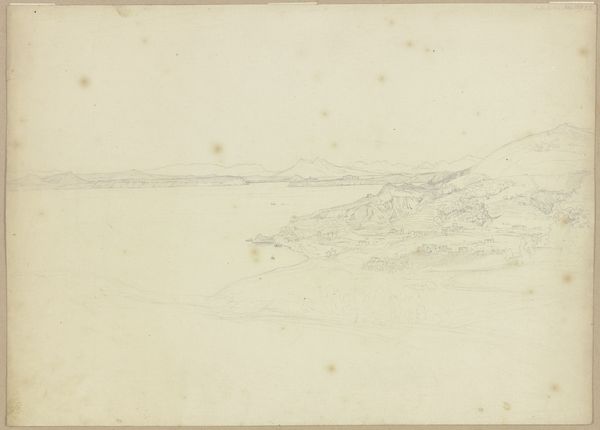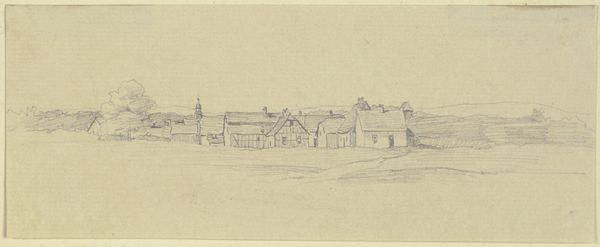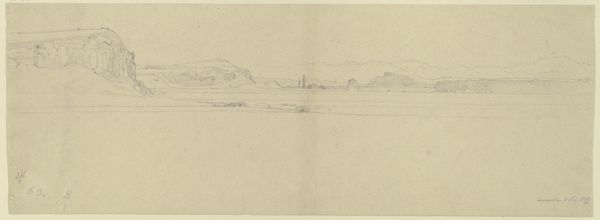
Copyright: Rijks Museum: Open Domain
Curator: Before us is a work by Kasparus Karsen titled "View of a City on a River," estimated to have been created sometime between 1820 and 1896. It’s a drawing using ink and watercolor, currently held here at the Rijksmuseum. Editor: My first impression is of a dreamscape. It’s hazy, almost ethereal. The sepia tones create a sense of nostalgia and distance, like a faded memory of a place. Curator: It's interesting you pick up on that feeling. Karsen, working in that period, was part of a broader movement to depict Dutch cities and landscapes as symbols of national identity. He wasn't simply representing reality; he was crafting an image. The Romantic movement often looked back to idealized versions of the past, imbuing them with meaning. Editor: Right. Water, both in mythology and art, often stands for subconscious and deep memories. A river running through a town carries the memories, the stories, the lifeblood of that community. Plus, a washed-out look may echo collective memory slowly eroding. Curator: And that ties into the urban planning debates of the era. Rapid industrialization and modernization were changing Dutch cities, which caused considerable anxiety about loss. Karsen and other artists provided images that seemed timeless and stable, pushing back against the chaos of modernity, in their own way, and preserving that for future generations. The selection of media contributes as well. Editor: It is curious he picked watercolors. I might have thought this lends softness and immediacy but, combined with ink, creates a subtle complexity. Ink gives the essential forms, architecture, and outlines but washed out color hints that these places may have already been eroding when these drawings were produced. Curator: Precisely. These images became very powerful, because they evoke something true, real and longed for—a shared past in the face of huge shifts within society. Think of how those in power were beginning to promote ideals of Dutchness and these images were very actively circulated in print media, in pamphlets and books, creating common values. Editor: That certainly casts the wistful feeling in a new light! Makes me see beyond a purely aesthetic piece into a vehicle for cultural consolidation. Well, I look at it again with fresh eyes. Thank you. Curator: A pleasure.
Comments
No comments
Be the first to comment and join the conversation on the ultimate creative platform.


